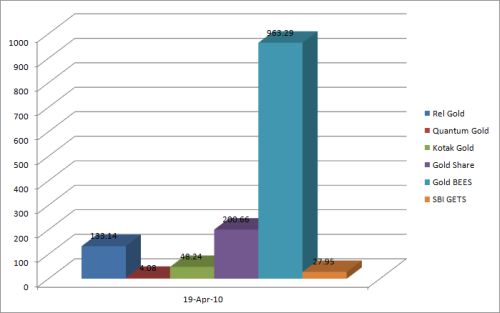Systematic Investment Plans or SIPs are really popular with Indian investors, and provide a way to invest regularly in mutual funds.
In the past there have been some discussion about how someone can set up a SIP with ETFs, and a lot of people have shown interest in setting up a SIP in ETFs or more specifically in gold ETFs.
I had a post on the topic with several roundabout ways of doing this, and before I tell you about the new way I discovered last week, let me recap them from my earlier post for you:
1. Kotak’s Auto Invest: Kotak has a plan called “AutoInvest†that in an online trading account based on systematic investment planning in Gold ETFs, equities and mutual funds.
2. Set up reminders with your offline broker: If you trade using an offline broker – you can tell them to remind you by giving you a call at a certain day of the month, and remind you to place the trade.
3. Set up reminders in Outlook or Gmail: You can set up reminders using Outlook, Gmail or any other tool that reminds you to invest at a certain day of the month.
4. Buy a fund of funds that owns ETFs: As stated in the comment in yesterday’s post – you can set up an SIP for a fund of funds that invests in a particular ETF you are interested in – and that gives you an indirect way of getting into a SIP for an ETF.
5. Value Averaging Investment Plan (VIP) from Benchmark funds: This is an idea given by another commenter on the earlier post. This product from Benchmark is akin to set up an ETF – I am not sure how effective this is because I haven’t used it myself or done any great deal of research on it, but it does give another option to investors.
Now, you can add ICICI Direct to this list. Last week I saw that they have a new option called “Equity SIP†that lets you set up a systematic investment plan in a list of given stocks. These stocks include some ETFs also like the Benchmark Gold ETF or Benchmark S&P CNX 500 Fund.
Investors have been asking for this option since a long time, and it is great that they have one more way of setting up SIPs in ETFs. If you know of more ways than are listed here, then please do leave a comment, and I will update my post to include those options as well.





